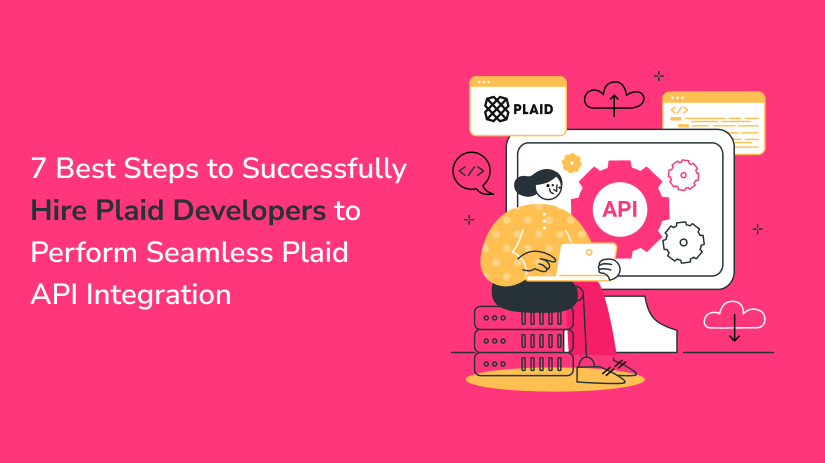In today’s rapidly evolving financial technology landscape, integrating third-party APIs like Plaid has become crucial for businesses aiming to streamline their operations and enhance user experiences.
However, the success of such integrations heavily depends on the expertise of the developers handling them. Therefore, hiring skilled Plaid developers or engaging a reputable Plaid development company is paramount.
If you’re considering integrating the Plaid API into your fintech platform, here are seven essential steps to ensure a seamless hiring process:
Connect with us for Fintech Development Needs
Trusted by companies like Plaid, Yodlee, Codat.
Define Your Project Requirements
Before diving into the hiring process, clearly define your project requirements and objectives. Determine the specific functionalities you wish to incorporate using the Plaid API, such as bank account verification, transaction categorization, or income verification. This clarity will help you identify candidates or companies with the necessary skills and experience.
Research Fintech Developers Specializing in Plaid Integration
Conduct thorough research to identify experienced fintech developers or development companies with a proven track record in Plaid integration. Look for portfolios, case studies, and client testimonials that demonstrate their expertise in working with Plaid’s API and delivering successful projects.
Evaluate Technical Proficiency
When screening potential candidates or companies, assess their technical proficiency in Plaid integration. Look for Plaid developers with a strong understanding of APIs, particularly Plaid’s documentation, authentication methods, and data handling practices. Evaluate their ability to handle complex integration challenges and optimize performance.
Assess Industry Experience
Consider hiring Plaid developers or companies with relevant industry experience in fintech and financial services. Professionals familiar with the regulatory landscape, security standards, and best practices within the fintech sector are better equipped to navigate the complexities of Plaid integration and ensure compliance with industry regulations.
Review Past Projects and Client References
Request to review past projects related to Plaid integration and seek client references to gauge the Plaid developer or company’s reliability, communication skills, and ability to meet deadlines. A proven track record of delivering high-quality, on-time projects is a strong indicator of their competence and professionalism.
Conduct Technical Interviews
For individual Plaid developers, conduct technical interviews to assess their problem-solving abilities, coding skills, and familiarity with Plaid’s API. Ask specific questions about previous integration projects, challenges encountered, and solutions implemented. For companies, engage in detailed discussions about their approach to Plaid integration and project management methodologies.
Negotiate Terms and Finalize Agreements
Once you’ve identified the right candidate or company, negotiate terms, including project scope, timelines, milestones, and pricing. Ensure that all agreements are documented in a clear and comprehensive contract that outlines deliverables, payment schedules, and dispute resolution mechanisms. Clarify expectations regarding communication channels, progress updates, and post-launch support.
Final Words
In conclusion, hiring skilled Plaid developers or engaging a reputable Plaid development company is essential for the successful integration of Plaid’s API into your fintech platform.
By following these seven steps and conducting thorough due diligence, you can ensure a seamless hiring process and lay the foundation for a successful collaboration that drives innovation and enhances your business offerings in the competitive fintech landscape.
Happy Plaid Development!!
Connect with us for Fintech Development Needs
Trusted by companies like Plaid, Yodlee, Codat.





